

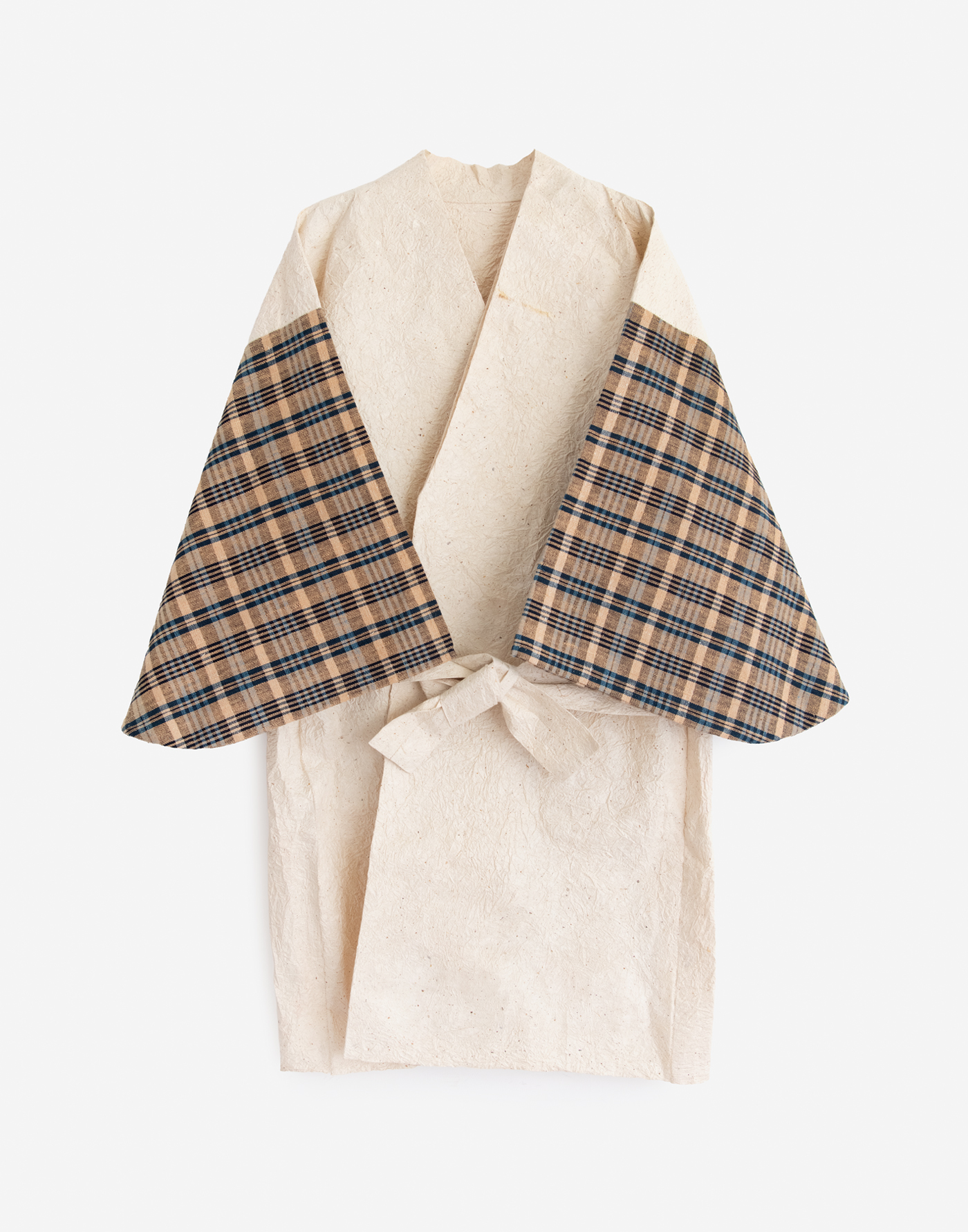
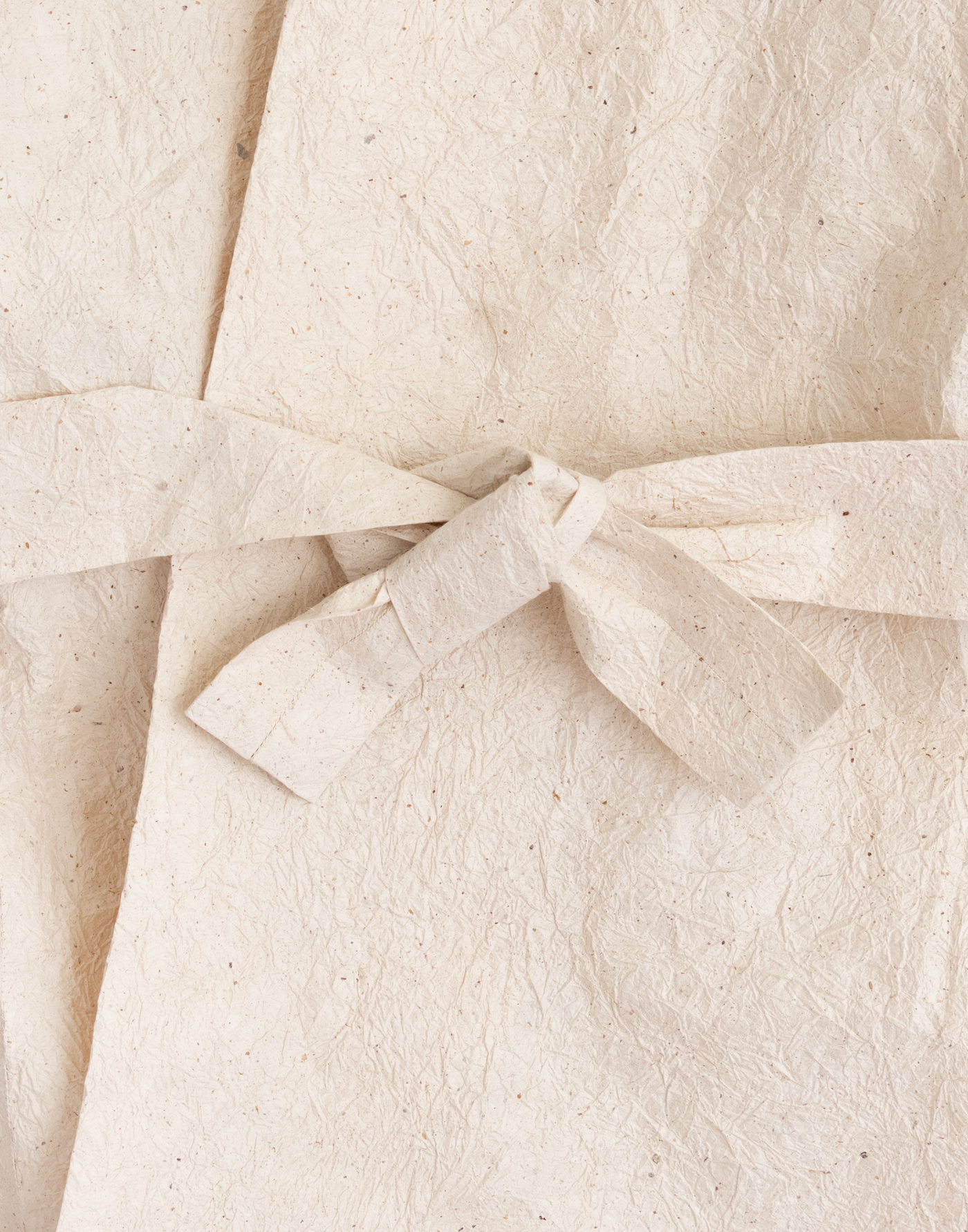
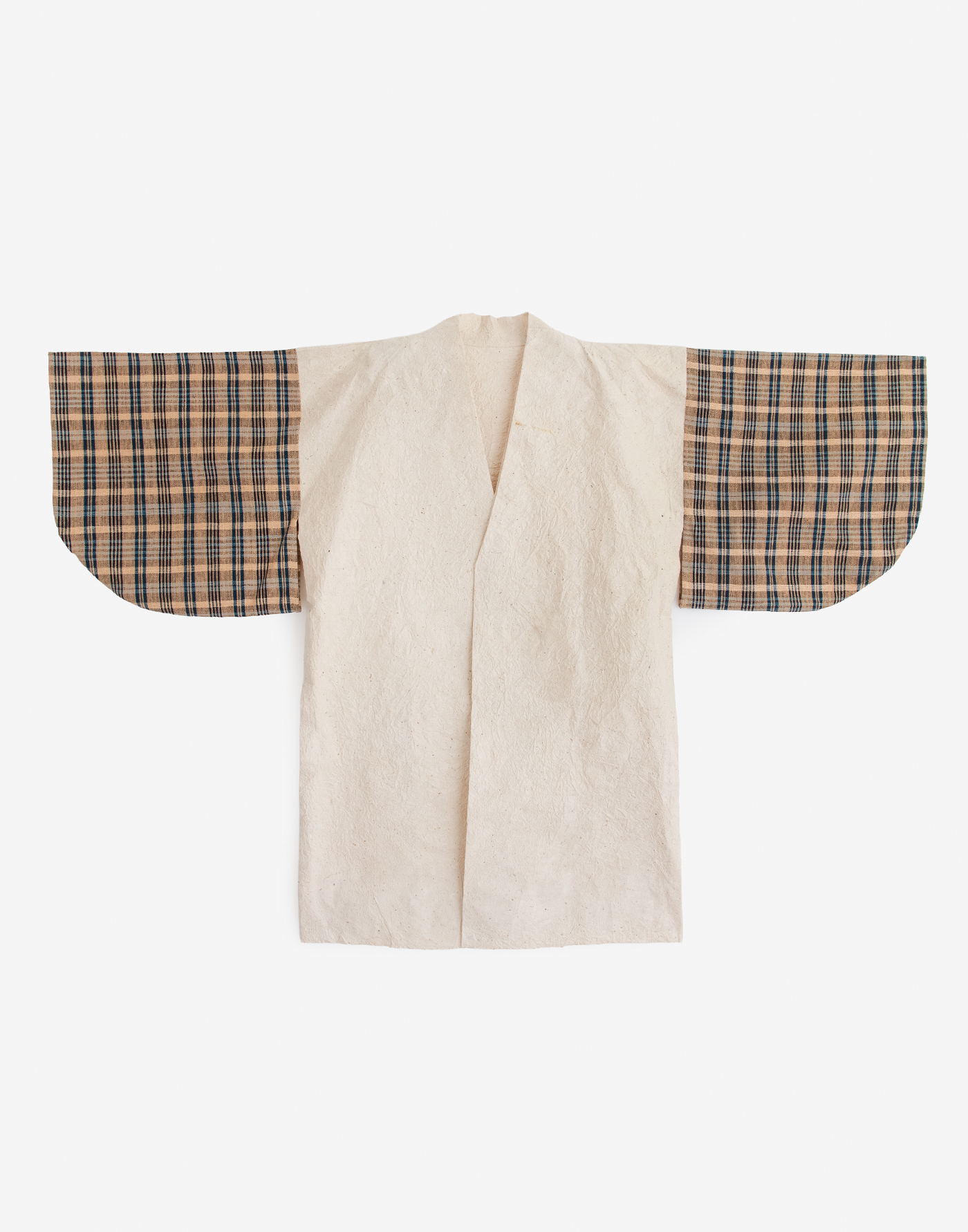
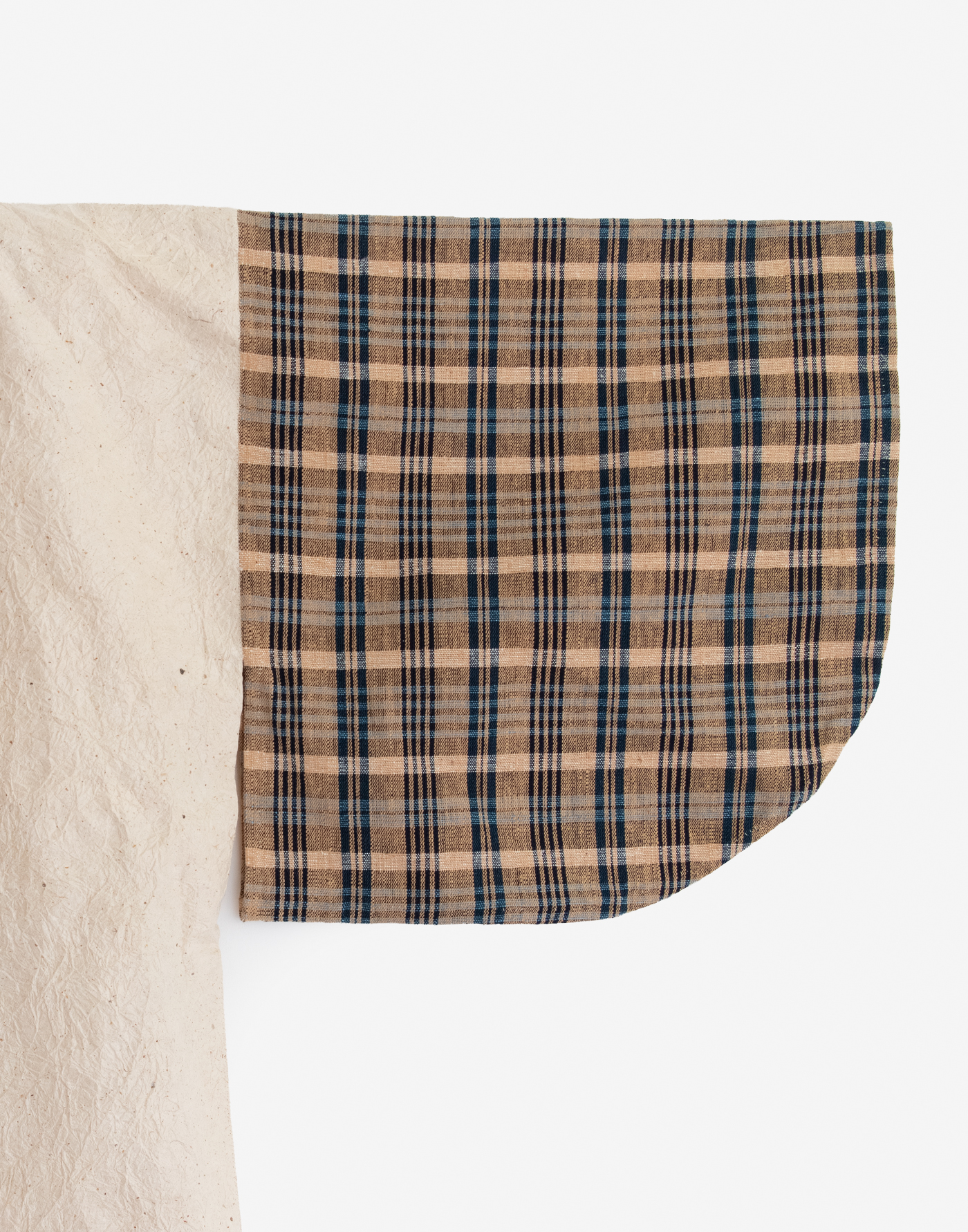
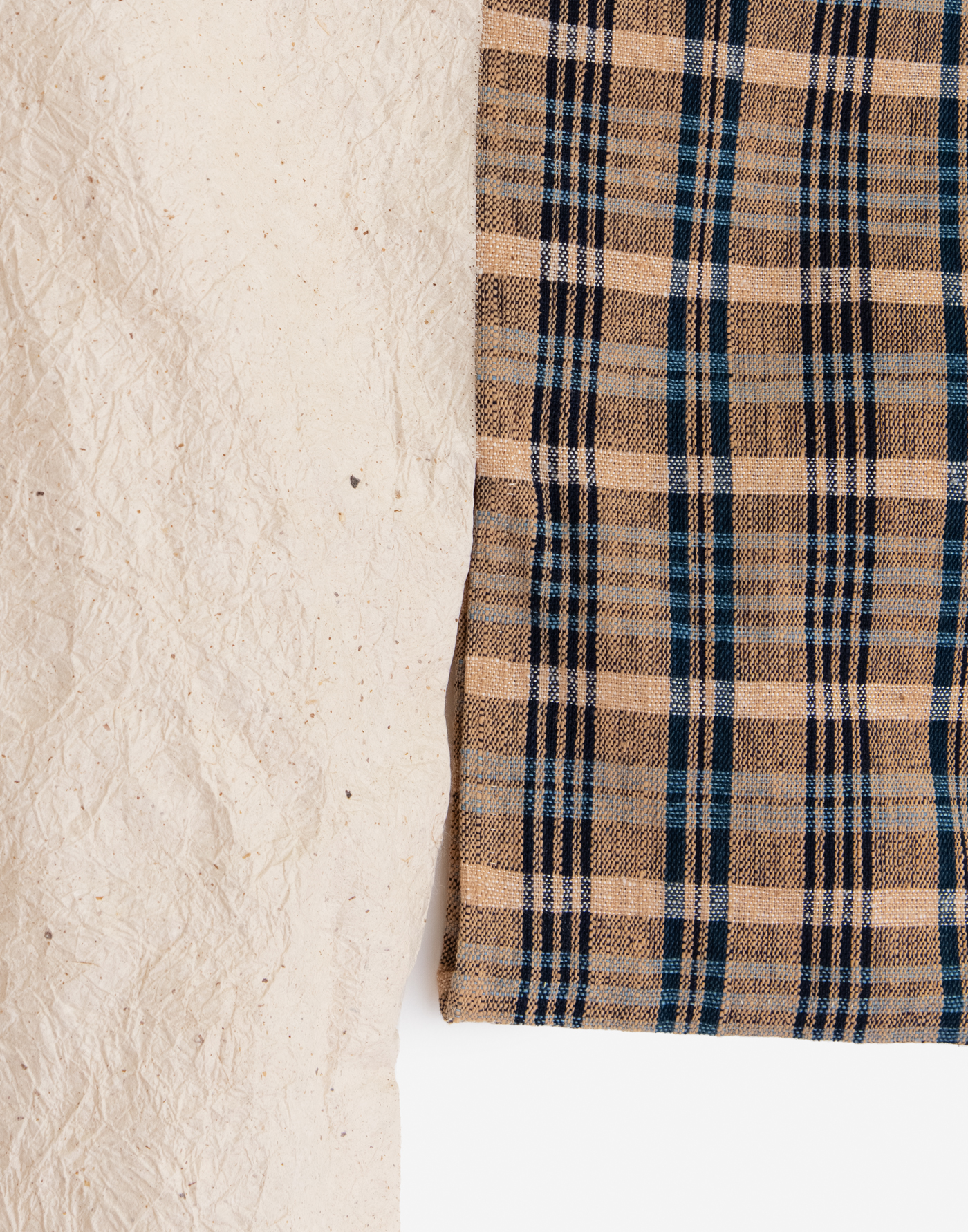
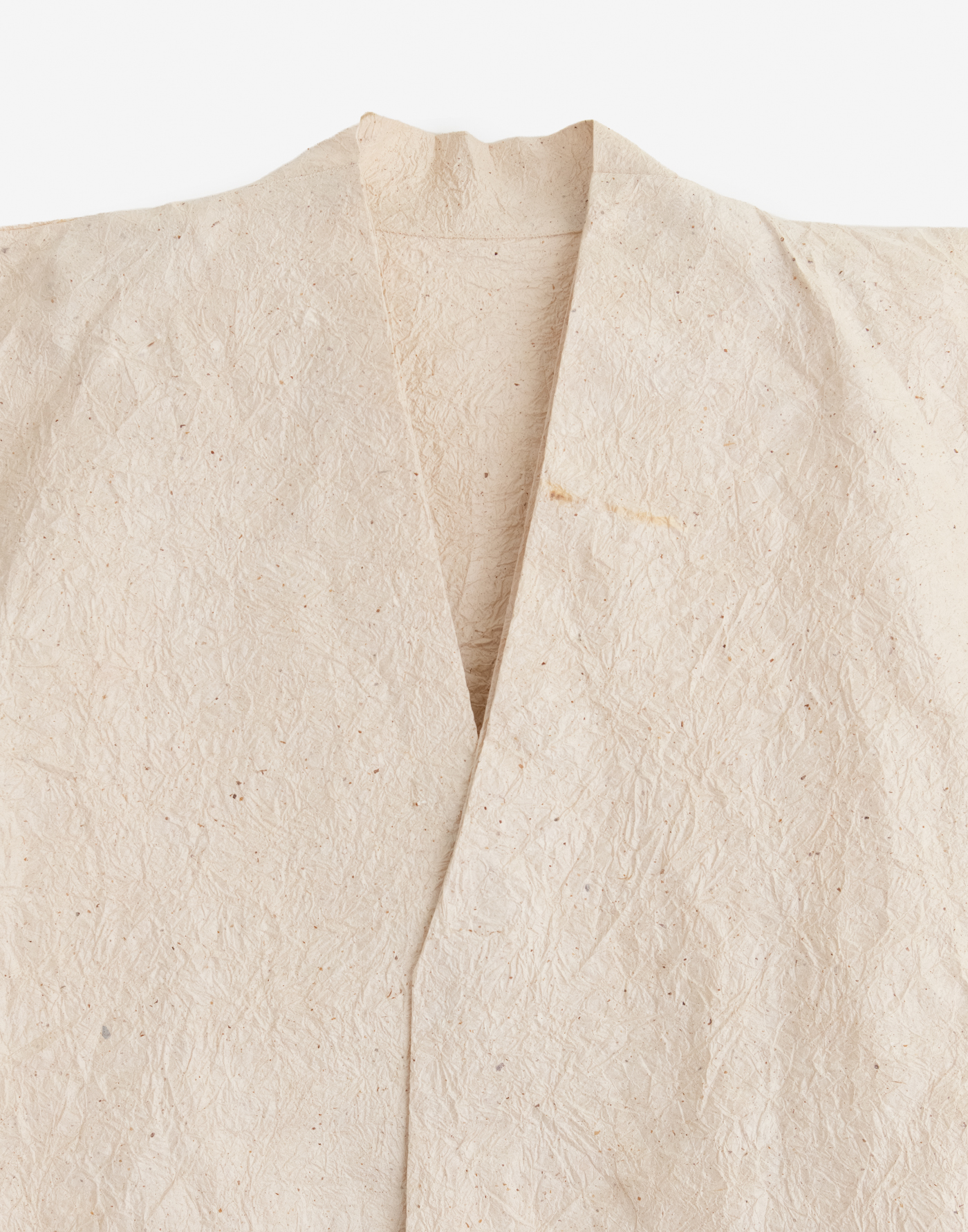

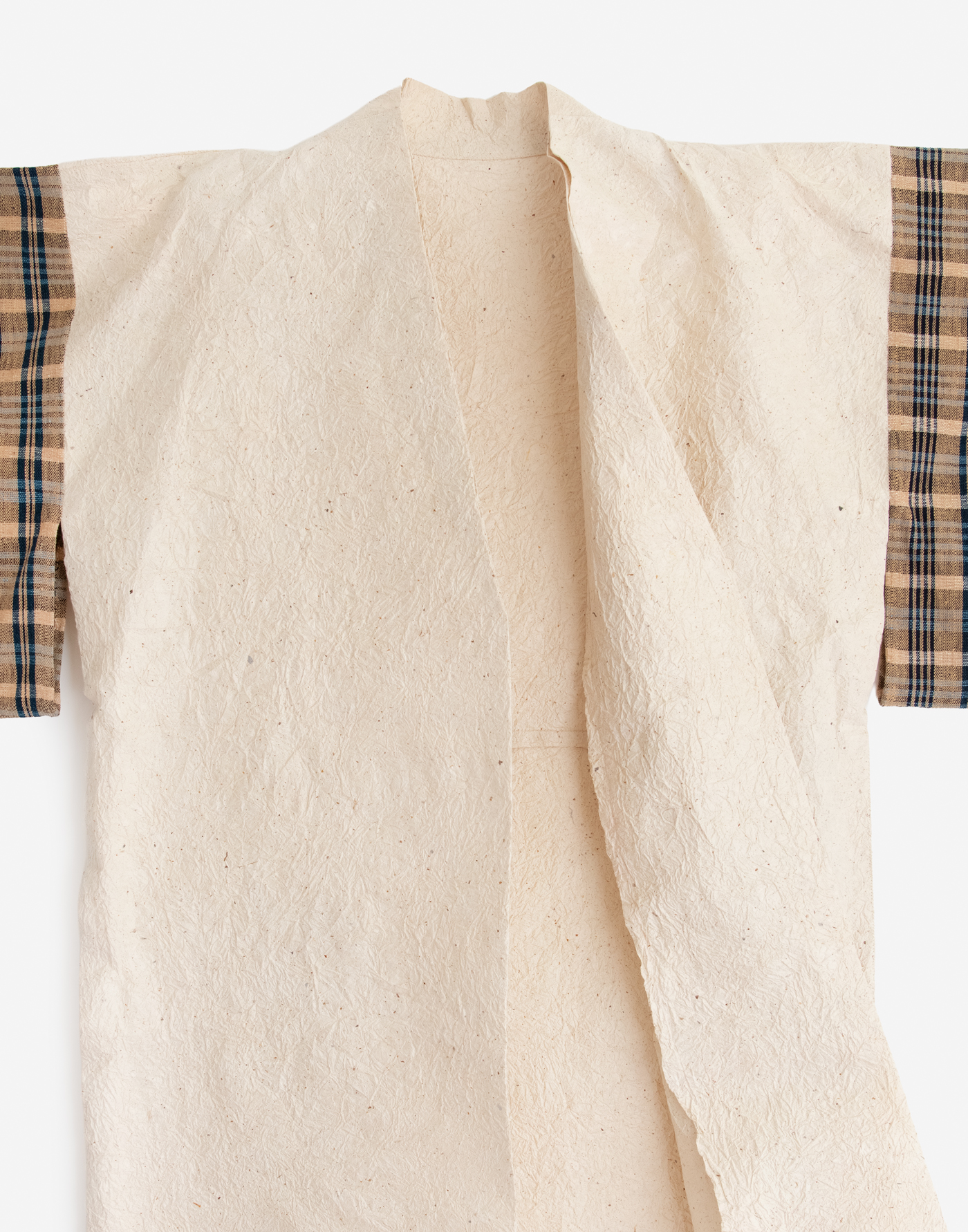
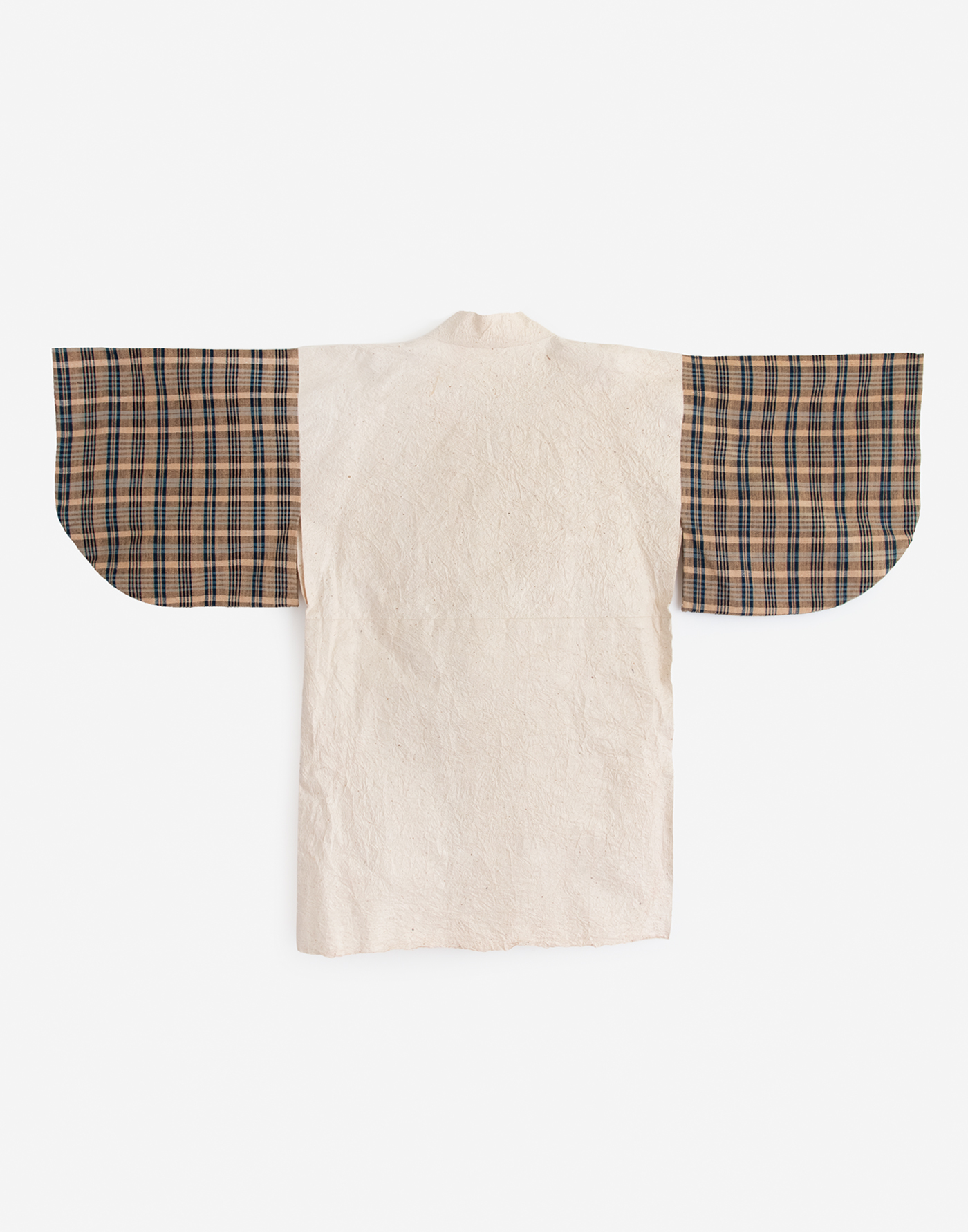
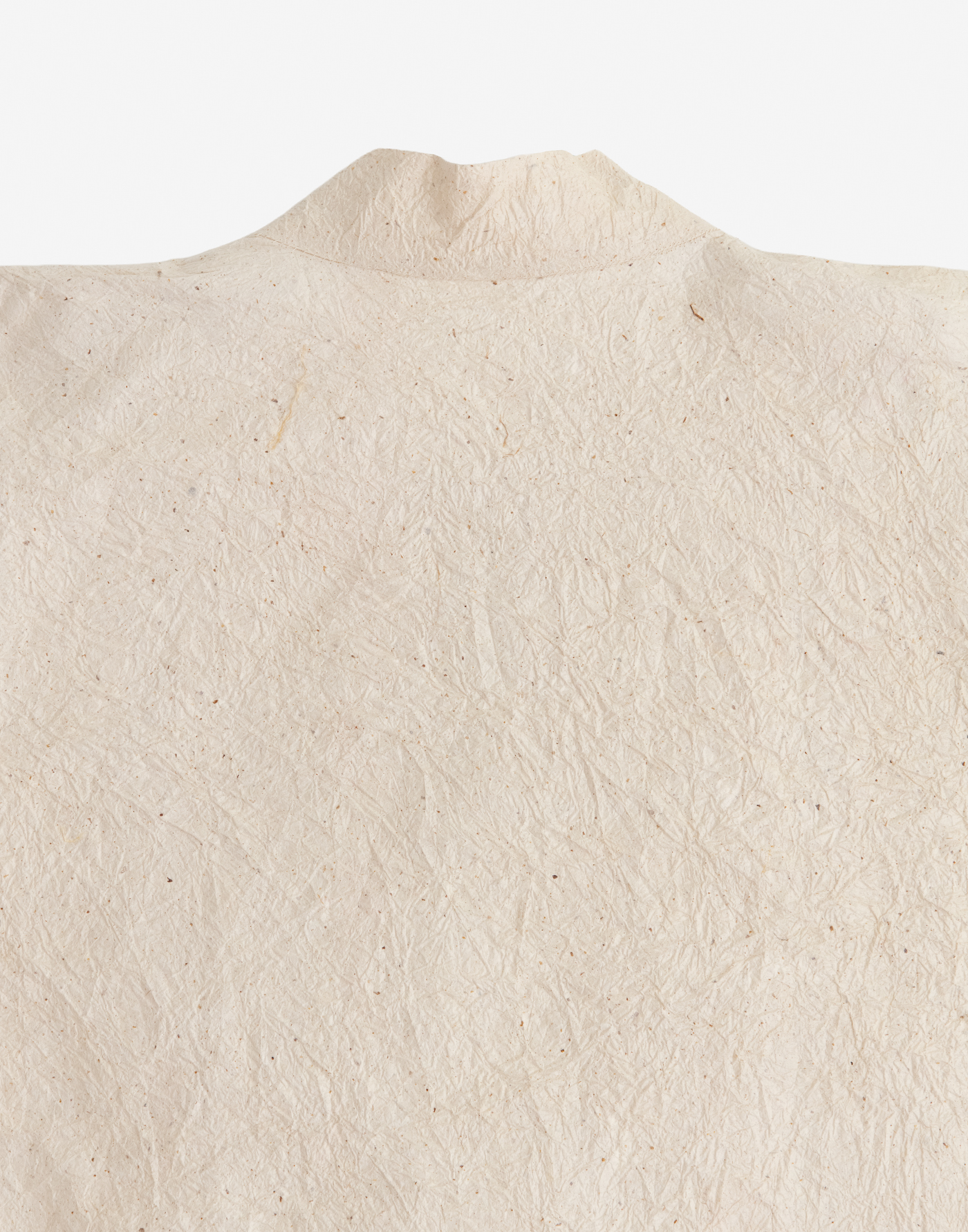
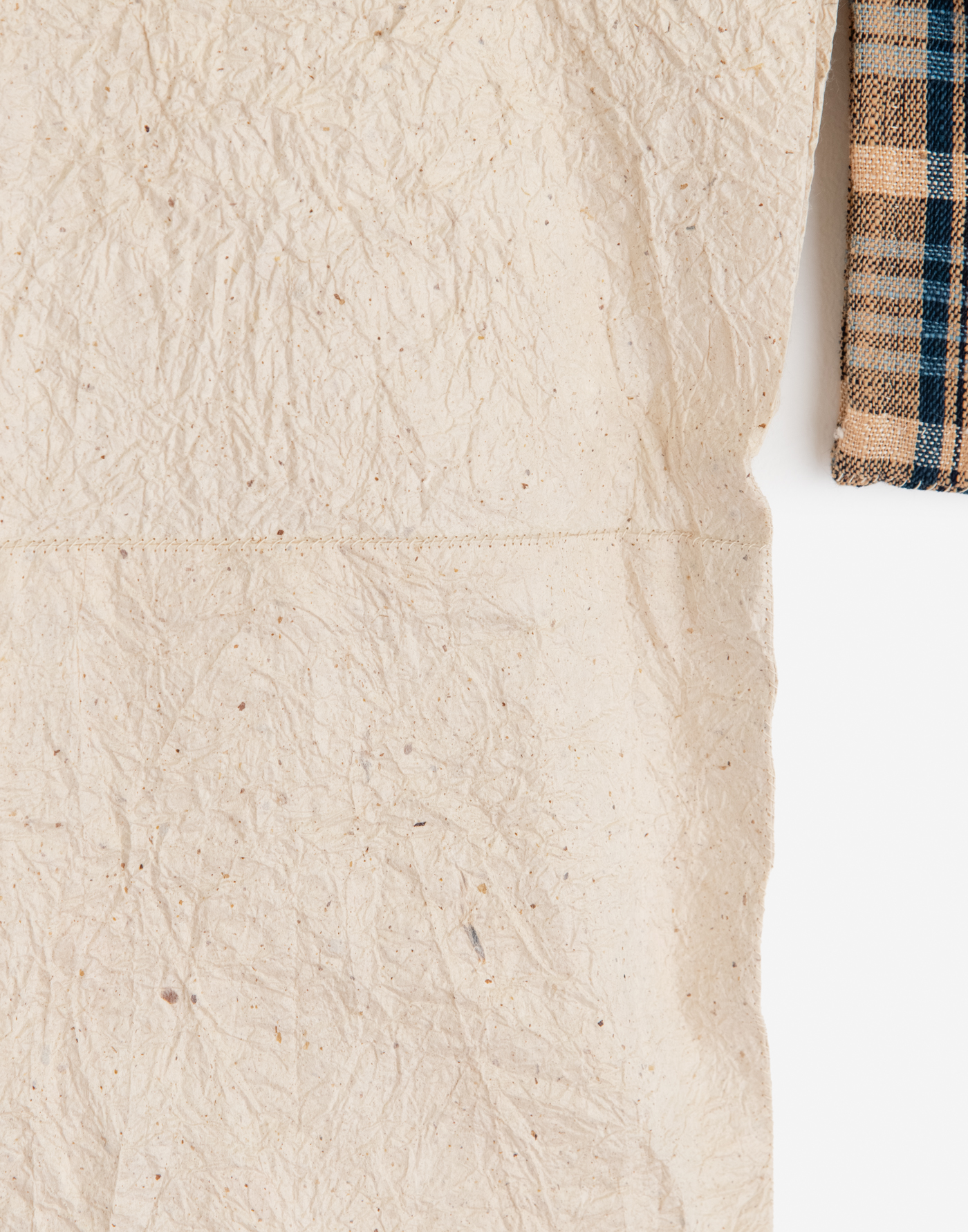
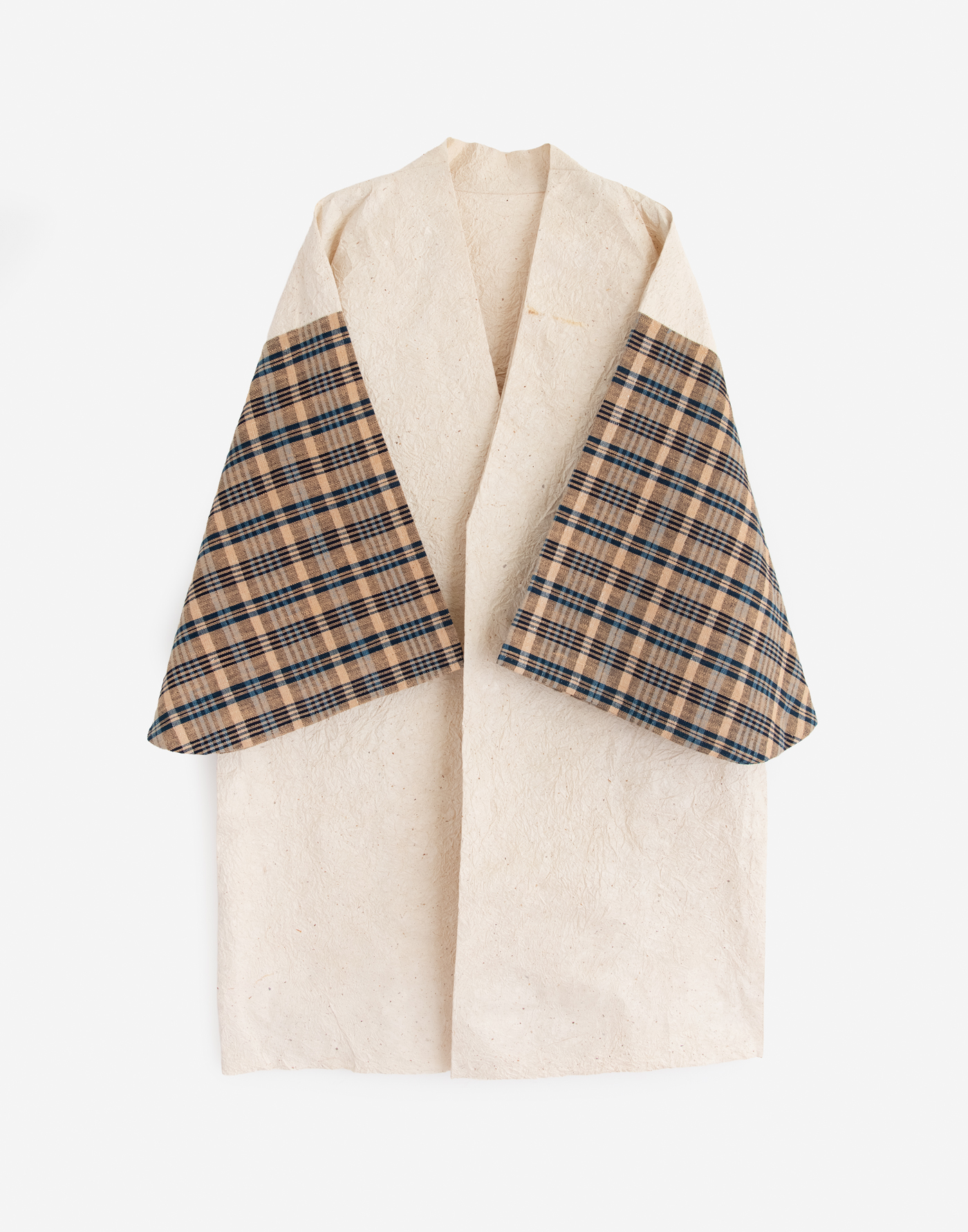
“Jyadoushi” wasi and Tanba cloth Paper robe
| Paper garments made from Sekisyu washi “Jadoushi” paper and Tamba cloth. Paper garments designed for the “Omizue” and “Funamizukai” ceremonies. “Jyadoushi” Paper One type of Sekisyu washi, “Jyadoushi,” is a paper used for the giant serpent in the “Iwami Kagura” tradition passed down in the Iwami region of Shimane Prefecture. “Jyadoushi” is a strong, resilient washi designed to support the giant serpent. Sekishū washi is made from high-quality “kozo” (paper mulberry) cultivated in the Iwami region of Shimane Prefecture, resulting in a strong, lustrous paper. Records indicate the Sekishū region (Iwami Province) was already a paper-producing area around 927 AD (En'yō 5). By 1665 (Kanbun 5), it was known and distributed in Osaka, the primary paper market, under the name “Sekishū Hanshi.” In recent years, it has been designated a National Important Intangible Cultural Property and inscribed on the UNESCO Intangible Cultural Heritage list. Tamba Cloth Tamba cloth is a plain-woven, handwoven fabric produced in Saji Village, Tamba Province. It is made by interweaving hand-spun cotton and tsumami silk spun from waste fibers. It is woven in a grid pattern using hand-spun yarn dyed with plant-based dyes. The dyes are derived from plants available around the village. Using indigo and tea as the base, they employ materials such as the bark of wild chestnut trees, Japanese bayberry bark, alder bark, and the roots of plants like knotweed, Jerusalem artichoke, and loquat that grow along field paths. This fabric was woven extensively from the late Edo period to the early Meiji era and was cherished in the Kyoto area, where it was made into futons and kosode kimono. It declined and was forgotten by the Taisho era. In the early Showa period, Muneyoshi Yanagi discovered this charming striped cotton by chance at a Kyoto morning market and asked craft researcher Rokuro Uemura to identify its place of origin. In 1931 (Showa 6), Kamimura identified the striped cotton as Saji cotton, woven in Saji Village. In 1953 (Showa 28), under Kamimura's guidance, Tamba cloth was recreated. In 1954 (Showa 29), with the backing of Kamimura and Yanagi, the local preservation society established the Tamba Cloth Heritage Center. Paper Sleeves: Cotton 96%, Silk 4% Size: Free Length 90 / Width 56 / Cuff from front neck point (through Shoulder point) 62 *cm Click here for inquiries regarding size. |
|||||
|